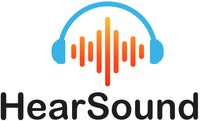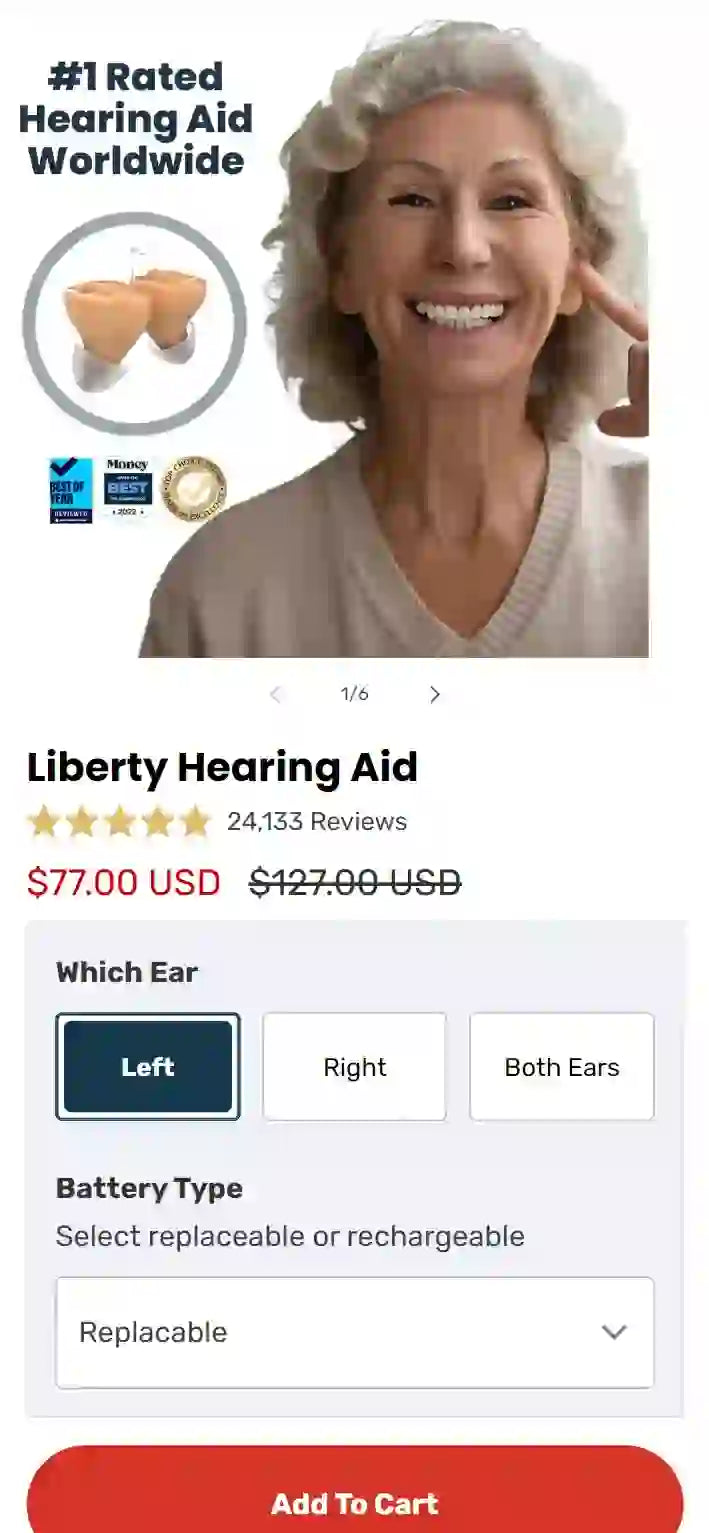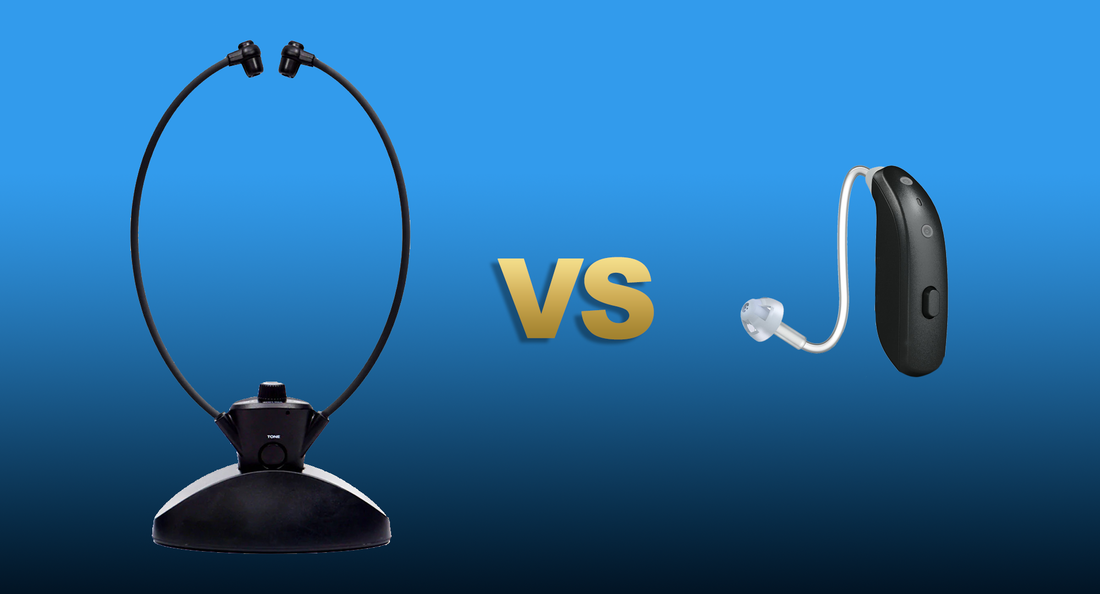If you or a loved one is struggling to follow TV dialogue, you might wonder: should you invest in hearing aids, or would a TV listening device do the job? Both have their place, but they serve very different purposes.
In this guide, we will compare hearing aids and TV headphones side by side - explaining what each does well, where they fall short, and how to know which solution makes sense for your situation.
Understanding the Difference
Before diving into details, let’s get one thing clear:
-
Hearing aids are medical devices. They are designed for daily use in every environment, from restaurants to phone calls. They require professional evaluation, fitting, and follow-up care.
-
TV hearing devices (or TV headphones) are consumer electronics. They are built specifically to make television clearer and more enjoyable. No medical diagnosis is required, and anyone can benefit from them.
Both can help - but in very different ways.
What Hearing Aids Do
Hearing aids are small, discreet devices worn in or behind the ear. They are programmed by an audiologist to match a person’s unique hearing loss profile.
Strengths:
-
Designed for all-day wear across all environments.
-
Amplify speech and environmental sounds, making daily communication possible.
-
Advanced models can filter background noise in restaurants or on the street.
Limitations:
-
Cost. High-quality hearing aids often run several thousand dollars.
-
Maintenance. They need regular adjustments, cleanings, and battery or charger care.
-
TV performance. While some pair with TVs via Bluetooth, many users find they still struggle with dialogue clarity because hearing aids amplify all room sounds, not just the TV.
-
Medical requirement. Hearing aids require an audiologist’s evaluation, prescription, and fitting.
When they’re essential:
If you or your loved one has significant hearing loss that affects daily life and conversation, hearing aids are not optional. They are the medical solution that restores overall communication.
What TV Hearing Devices Do
TV hearing devices are systems that transmit sound from the television directly to the listener - usually through wireless headsets or speakers.
Strengths:
-
Purpose-built for television. They deliver clear dialogue straight from the TV to your ears.
-
Affordable. A fraction of the cost of hearing aids.
-
Easy to set up. Plug in the transmitter, put on the headset, and you’re ready.
-
Personalized volume. Each listener controls their own level, so no more family arguments.
-
Immediate benefit. No doctor’s visit, no prescription, no fitting required.
Limitations:
-
Focused solution. They are not designed to help with general hearing challenges in daily life.
-
Home-based. These devices are for TV time, not conversations at the store or on the phone.
When they’re ideal:
If TV is the main struggle - if the rest of life is manageable but watching shows is frustrating - a TV hearing device is the smarter, simpler choice.
Why the Confusion?
Many people assume that if someone struggles with TV sound, the answer must be hearing aids. In reality, TV is often the first place hearing trouble shows up, but that does not mean someone needs a medical device right away.
For caregivers, this distinction matters. A parent may resist hearing aids due to stigma or cost, but they may happily use a TV headset once they see how much easier it makes television.
HearSound Options at a Glance
HearSound offers a range of TV hearing devices to fit different preferences:
-
Gold - A wireless TV headset system with USB charging. The starting model: simple, affordable, and effective.
-
Platinum - Same as Gold but with a charging base instead of a USB cord. Easier to dock, especially for seniors.
-
Theatre - Premium over-ear wireless headphones with richer, high-fidelity sound for immersive viewing.
-
SoundBall - A round portable speaker you place near you instead of wearing a headset. Perfect for those who don’t want anything on their head.
-
Extra Headset - Add-on option for households where two people want their own volume controls.
Each delivers clarity and comfort without requiring medical evaluation.
Cost Comparison
The price difference between hearing aids and TV headphones is dramatic:
-
Hearing aids: Often $3,000 - $6,000 per pair.
-
TV hearing devices: Typically under $200.
This does not mean one replaces the other. It means that for the specific problem of TV clarity, a TV hearing device is often the faster, safer, and more affordable first step.
When to Choose Hearing Aids
-
If daily conversations are difficult, even in quiet rooms.
-
If phone calls, restaurants, and one-on-one chats are a struggle.
-
If an audiologist has diagnosed hearing loss.
In these cases, hearing aids are the medical path forward.
When to Choose TV Hearing Devices
-
If TV is the main or only frustration.
-
If you want to watch with family without blasting the room.
-
If you’re looking for a quick, affordable, no-risk solution.
-
If you want to delay or supplement hearing aids with a device that improves quality of life right now.
Can You Use Both?
Absolutely. Many people wear hearing aids during the day and still use TV hearing devices at night. The two complement each other rather than compete. Hearing aids handle conversations, while TV devices handle entertainment. Plus, many people like to give their ears a "break" from the hearing aids, and rely on their TV listening device to relax during television sessions.
The Role of Support and Value
No matter which device you choose, you need confidence that it will work. That is where HearSound stands out:
-
US-based customer service available when you need it.
-
Setup videos and guides for every product.
-
30-day money-back guarantee.
-
Fair pricing that delivers quality without inflated costs.
Conclusion
Hearing aids and TV hearing devices are not rivals - they are different tools for different needs.
-
Hearing aids are essential medical devices for those with significant hearing loss, requiring professional evaluation and advice.
-
TV hearing devices are consumer solutions that anyone can benefit from, making television enjoyable again without hassle or stigma.
If your main struggle is television, a HearSound system may be all you need. If conversations everywhere are difficult, talk to a hearing professional about hearing aids - and consider pairing them with a HearSound device for the best of both worlds.
Either way, the goal is the same: making life clearer, easier, and more enjoyable.


